Oxides and hydroxides: Pyroclor
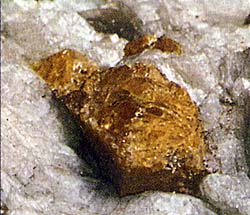 Diagnostic card.
Diagnostic card.
(Na, Ca, U) 2 (Nb, Ta, Ti) 2 O 6 (OH, F)
Cubic amount of cubic zirconia
Hardness 5-5,5
Specific weight 4,3-4,5
Cleavage is difficult to determine
Cracked shell
Color yellow, red, brown
Shine greasy

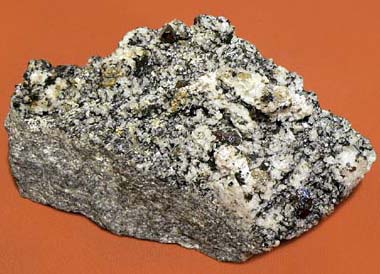 The chemical formulas of pyrochlore and microlite (in the photo above) are identical, but the microlite differs by the predominance of tantalum over niobium. Represented by distinctly formed crystals, almost exclusively octahedra, which sometimes due to the cutting of the vertices by small faces are transformed into rhombododecahedrons. The color of pyrochlore is brown, and the microlite is pale yellow to reddish-brown, sometimes emerald green. Color yellow-brown, reddish-brown, brown to brownish-black, also light brown, amber-yellow, pale yellow to colorless, occasionally green, yellowish- and olive-gray (pandaite). In crystals, the color is often distributed unevenly: the core differs in color. Can not be stored at home.
The chemical formulas of pyrochlore and microlite (in the photo above) are identical, but the microlite differs by the predominance of tantalum over niobium. Represented by distinctly formed crystals, almost exclusively octahedra, which sometimes due to the cutting of the vertices by small faces are transformed into rhombododecahedrons. The color of pyrochlore is brown, and the microlite is pale yellow to reddish-brown, sometimes emerald green. Color yellow-brown, reddish-brown, brown to brownish-black, also light brown, amber-yellow, pale yellow to colorless, occasionally green, yellowish- and olive-gray (pandaite). In crystals, the color is often distributed unevenly: the core differs in color. Can not be stored at home.
Cleavage is usually not observed, sometimes imperfect cleavage or separation according to (111). Aggregates - Crystals are usually small, sometimes reaching 10 cm or more, clusters of crystals, fine crystalline aggregates. Crystals are usually octahedral. Often they are imperfect, sometimes flattened along the edges of the octahedron. Crystals are sometimes zonal.
Diagnostic signs.
In crystals, these minerals can be determined by a clearly expressed octahedral shape. Radioactive to a varying degree in accordance with the different contents of uranium and thorium, sometimes only certain zones of crystals are radioactive. After calcination, it luminesces in the rays of a mercury quartz lamp.
Origin.
These are typical minerals of pegmatites - derivatives of alkaline rocks. Dark-colored differences appear only in thin fragments; Hydrated pyrochlore is opaque.
Deposits and applications.
Pyroclor is sometimes found in significant quantities, both at Mbeya in Tanzania and in the Fen area in Norway. A rarer species (koppit) is found in the Kaiser-piece in Germany, associating it with magnesioferrit, forsterite and apatite. Excellent pyrochlore crystals are present in calciphyres from the Oka deposit (Canada). The classical locations of the microlite are in the state of Maine, Amylia-Court House in Virginia, Heddam in Connecticut (USA), Betanama in Madagascar and Va-Rutresk in Sweden. Both minerals are of great importance due to the high content of rare elements.
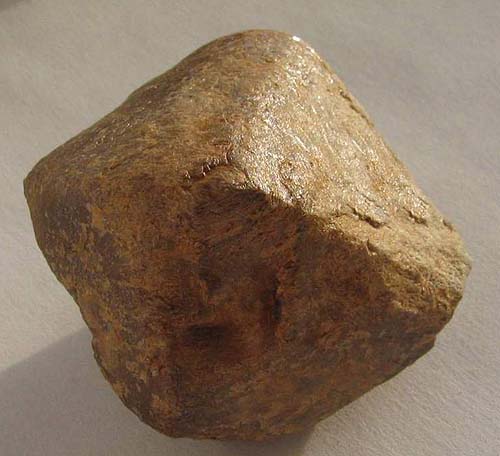
Pyroclor. Tatarskiy mn, Tatarka river, Yenisei ridge, Av. Siberia (S), Russia. Photo: © А.А. Evseev.
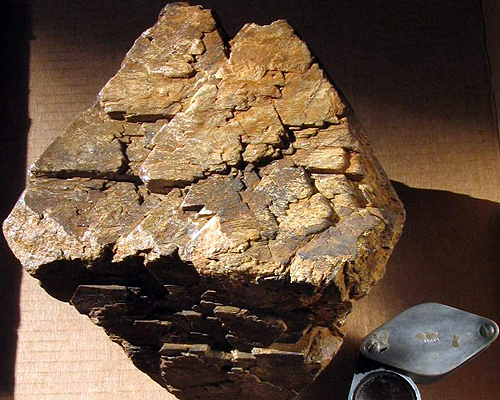
Pyroclor. The dangerous "Babylonian stone" is radioactive and causes hallucinations. Photo: © А.А. Evseev.
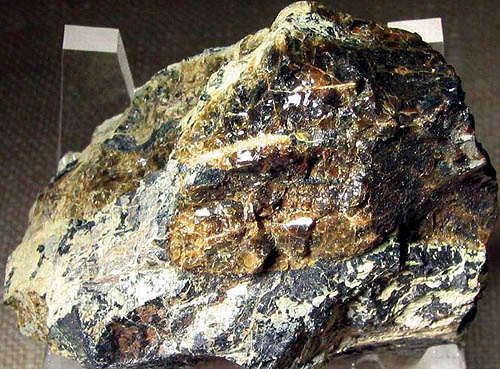
Uranpyrochlor. Beryl Hill, Zap. Australia. Photo: © А.А. Evseev.
- Ghetchellit - "New Almaden blend" - arsenide and antimony sulfide (modern sulfosol)
- Antimony is a toxic metal (semimetal) , widely used in metallurgy, medicine and engineering
- Zirconium - a rare and undiscovered metal and the most dangerous precious stone in oxide and salt
- Gold - yellow dangerous and poisonous metal of modern accurate digital and cable technologies
- Sulfur is a golden-yellow toxic substance and a sign of active volcanic activity
- Cadmium is an undisputed toxic silvery metal unknown to a wide range of people
- Lead - a toxic gray imitator of metallic silver and toxic metal blende
- Arsenic is a classic poison of medieval and modern poisoners and medicine in medicine
Poisonous and radioactive dangerous stones and minerals
** - poisonous stones and minerals (mandatory check in the chemical laboratory + explicit indication of toxicity)
** - radioactive stones and minerals (mandatory check on the standard dosimeter + ban on open sales in case of radioactivity exceeding 24 milli / g / h + additional measures of population protection)
Catalog of minerals and semi-precious stones of the world by groups
** - poisonous stones and minerals
** - radioactive stones and minerals


Comments
When commenting on, remember that the content and tone of your message can hurt the feelings of real people, show respect and tolerance to your interlocutors even if you do not share their opinion, your behavior in the conditions of freedom of expression and anonymity provided by the Internet, changes Not only virtual, but also the real world. All comments are hidden from the index, spam is controlled.